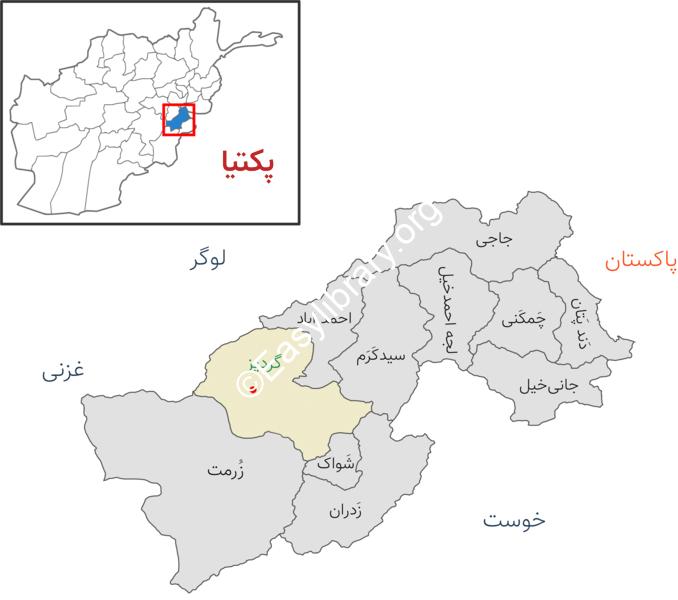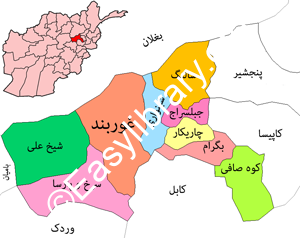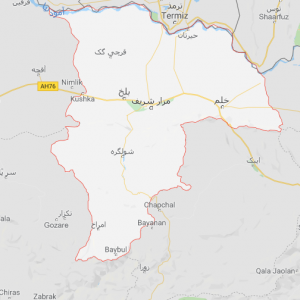About ((Paktia Districts Maps) د پکتیا ولایت او ولسوالیو نقشه): You can read short details of the book above. If You want to get the book ((Paktia Districts Maps) د پکتیا ولایت او ولسوالیو نقشه ), than just click on DOWNLOAD Now Bottom, wait and the download will start to your Mobile/PC.
Quotes
Paktia; A historical province in eastern Afghanistan
From forest areas to cold and mountainous climates
Paktia is one of the eastern provinces of Afghanistan, with an area of 6432 square kilometers and a population of about 612 thousand people, from the north to Nangarhar province, from the west to Logar and Ghazni provinces, from the south to Paktika province, and from the east to Khost province and the borders of Pakistan. it’s limited.
Paktia is located 115 km from Kabul city and Gardiz is the center of this province.
Paktia was larger in the past, but this province was first divided into two provinces, Paktia and Paktika, and then its size was reduced with the establishment of Khost province in the eastern areas of Paktia. The lands of Paktia are generally mountainous and forested, and except for Khost and Chamkani, which have hot and humid weather, other areas have cold and mountainous weather.
Paktia; A historical province in eastern Afghanistan, Paktia; A historical province in eastern Afghanistan, Paktia; A historical province in eastern Afghanistan, Paktia; A historical province in eastern Afghanistan, Paktia; A historical province in eastern Afghanistan, Paktia; A historical province in eastern Afghanistan, Paktia; A historical province in eastern Afghanistan
Most of the areas of Paktia are not very favorable for agriculture due to the unfavorable climatic conditions, and only around Zormet and the lands around Gardiz and some flat lands, it is possible to farm; Most of the water in Paktia’s agricultural land is supplied from aqueducts.
Wheat, barley, legumes, summer fruits and vegetables are considered to be the main agricultural products of this province. In mountainous areas, the most important agricultural product is potato.
Most of the people of this province are Pashtuns and some are Tajiks.
historical background; From the Achaemenids to an important base for the Afghan Mujahideen
In the 5th century BC, Herodotus mentioned a land called Paktike where a warrior people lived there and their lifestyle was similar to the Bactrians. Archaeological findings in Mirzaki located near Gardiz also bring the historical background of Paktia to the 3rd century BC.
In the Rigveda, there is a mention of a warrior tribe called Pakta. A group of orientalists equates the name Pashtun with Pakt. But from the point of view of linguistics, it is not acceptable to convert Pakt into Pashtun in the branches of Indian and Iranian languages.
During the Achaemenid period, this land was annexed to their territory, and after the fall of the Achaemenid Empire, it was considered one of his possessions, and after Alexander’s death, it was included in the territory of his successors.
Paktia; A historical province in eastern Afghanistan
The identification of more than 11,000 bacterial coins in Mirzaki indicates that this land was part of the territory of bacteria. The appearance of the Kushans in the northern areas of the Hindu Kush and their advance to the southern areas finally led to the fall of the Western Greek government around 20-45 BC. From this date onwards, Paktia was included in the territory of the Kushans.
During the period of Kushanian rule, from the middle of the 2nd century, the Loyak dynasty ruled over some of the eastern regions of today’s Afghanistan, including Paktia.
Hiuen Tsiang, a Chinese Buddhist who visited the western lands of China in the 1st/7th century AD, mentioned the two regions of Falana and Apukan, which also included the present-day province of Paktia. According to his report, in these areas, like other northern and eastern areas of today’s Afghanistan, Buddhism has been prevalent.
There is not much information about how Islam entered the land that is called Paktia today. According to the available documents, the first Leviki ruler of this region who converted to Islam was named Khanan or Khaqan. When he got the rule over Ghazna and Gardiz, he converted to Islam around 164 AH/781 AD, but after a while he returned to the religion of his fathers. But his son Muhammad bin Khaqan, who ruled until around 200 AH/816 AD, had definitely converted to Islam.
Years later, after the start of the civil wars in Afghanistan, following the communist coup in 1977/1356 and the entry of the Soviet army into Afghanistan in 1358 in order to support the central government of this country, Paktia became strategically important due to its proximity to the borders of Pakistan for the supply of Mujahideen weapons. And it was considered one of the important bases of Mujahideen in Afghanistan.
“Mirzake” treasure
One of the important treasures of Afghanistan is the “Mirzaka” treasure in the area of ”Gardiz” city, the center of Paktia province in the east of this country, which was discovered for the first time in 1326 AH. In fact, the discovery of the ancient region of Mirzake is one of the most valuable and largest discoveries of historical monuments in the world.
Paktia; A historical province in eastern Afghanistan
During the Soviet invasion of Afghanistan, a bomb was hit by fighters on Mirzake Hill, which led to the discovery of new treasures at the site of the explosion. The local people engaged in illegal and non-technical excavations in the area and provided rich wealth to antiquities smugglers.
During the years of civil wars and the Taliban period, the Kabul Museum was looted by antiquities looters, and most of the treasures of the Mirzake region were also looted from this museum and sold in Pakistan and other European countries.
The biggest looting took place in Mirzke region in 1992 and 1993 and a huge treasure of gold and silver worth hundreds of kilos was removed from this place. During the Taliban period, illegal excavations were carried out in the Mirzake area and about 3 tons of gold and silver were found in this area, which was the largest treasure discovered until that time.
None of these works obtained in recent years were transferred to the National Museum of Afghanistan and all of them were taken out of Afghanistan by antiquities dealers and sold at high prices in the international markets of New York, Zurich, Tokyo and London. Sold out.
Afghanistan JOBS , Download Also this book , Articles ,+Publish your Books







Reviews
There are no reviews yet.